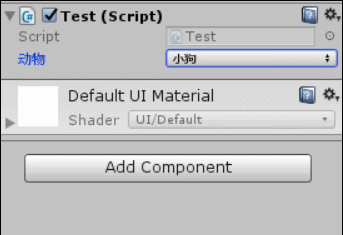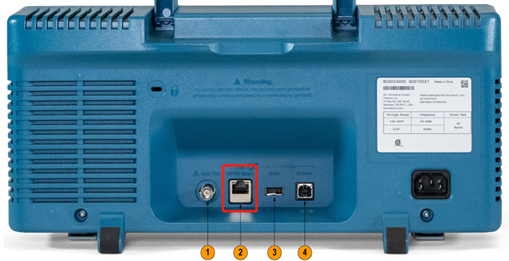Can you convince a DataContext to treat a column as always dirty?(您能否说服 DataContext 将列视为总是脏的?)
问题描述
有没有办法强制 LINQ-to-SQL 将列视为脏列?在全球范围内就足够了....
Is there a way to force LINQ-to-SQL to treat a column as dirty? Globally would suffice....
基本上,我在与 L2S 交谈的遗留系统上的一些审计代码有问题,想象一下:
Basically, I've got a problem with some audit code on a legacy system that I'm talking to with L2S, imagine:
var ctx = new SomeDataContext(); // disposed etc - keeping it simple for illustration
var cust = ctx.Customers.First(); // just for illustration
cust.SomeRandomProperty = 17; // whatever
cust.LastUpdated = DateTime.UtcNowl;
cust.UpdatedBy = currentUser;
ctx.SubmitChanges(); // uses auto-generated TSQL
这很好,但如果同一用户连续更新两次,UpdatedBy 是 NOP,TSQL 将(大致):
This is fine, but if the same user updates it twice in a row, the UpdatedBy is a NOP, and the TSQL will be (roughly):
UPDATE [dbo].[Customers]
SET SomeRandomColumn = @p0 , LastUpdated = @p1 -- note no UpdatedBy
WHERE Id = @p2 AND Version = @p3
就我而言,问题在于当前所有表上都有一个带大括号的审计触发器,它检查审计列是否已更新,如果没有则假定开发人员有错(替换 SUSER_SNAME(),尽管它也很容易抛出错误).
In my case, the problem is that there is currently a belt-and-braces audit trigger on all tables, which checks to see if the audit column has been updated, and if not assumes the developer is at fault (substituting SUSER_SNAME(), although it could just as readily throw an error).
我真正希望能够做的是说始终更新此列,即使它不脏" - 这可能吗?
What I'd really like to be able to do is say "always update this column, even if it isn't dirty" - is this possible?
推荐答案
基于 KristoferA 的回答,我在下面得到了like;这是邪恶而脆弱的(反射通常是),但现在可能已经足够了.战斗的另一面是改变触发器的行为:
Based on KristoferA's answer, I ended up with something like below; this is evil and brittle (reflection often is), but may have to suffice for now. The other side of the battle is to change the triggers to behave:
partial class MyDataContext // or a base-class
{
public override void SubmitChanges(System.Data.Linq.ConflictMode failureMode)
{
this.MakeUpdatesDirty("UpdatedBy", "Updated_By");
base.SubmitChanges(failureMode);
}
}
public static class DataContextExtensions
{
public static void MakeUpdatesDirty(
this DataContext dataContext,
params string[] members)
{
if (dataContext == null) throw new ArgumentNullException("dataContext");
if (members == null) throw new ArgumentNullException("members");
if (members.Length == 0) return; // nothing to do
foreach (object instance in dataContext.GetChangeSet().Updates)
{
MakeDirty(dataContext, instance, members);
}
}
public static void MakeDirty(
this DataContext dataContext, object instance ,
params string[] members)
{
if (dataContext == null) throw new ArgumentNullException("dataContext");
if (instance == null) throw new ArgumentNullException("instance");
if (members == null) throw new ArgumentNullException("members");
if (members.Length == 0) return; // nothing to do
const BindingFlags AllInstance = BindingFlags.Instance | BindingFlags.NonPublic | BindingFlags.Public;
object commonDataServices = typeof(DataContext)
.GetField("services", AllInstance)
.GetValue(dataContext);
object changeTracker = commonDataServices.GetType()
.GetProperty("ChangeTracker", AllInstance)
.GetValue(commonDataServices, null);
object trackedObject = changeTracker.GetType()
.GetMethod("GetTrackedObject", AllInstance)
.Invoke(changeTracker, new object[] { instance });
var memberCache = trackedObject.GetType()
.GetField("dirtyMemberCache", AllInstance)
.GetValue(trackedObject) as BitArray;
var entityType = instance.GetType();
var metaType = dataContext.Mapping.GetMetaType(entityType);
for(int i = 0 ; i < members.Length ; i++) {
var member = entityType.GetMember(members[i], AllInstance);
if(member != null && member.Length == 1) {
var metaMember = metaType.GetDataMember(member[0]);
if (metaMember != null)
{
memberCache.Set(metaMember.Ordinal, true);
}
}
}
}
}
这篇关于您能否说服 DataContext 将列视为总是脏的?的文章就介绍到这了,希望我们推荐的答案对大家有所帮助,也希望大家多多支持编程学习网!
本文标题为:您能否说服 DataContext 将列视为总是脏的?


- 是否可以在 .Net 3.5 中进行通用控件? 2022-01-01
- C# 通过连接字符串检索正确的 DbConnection 对象 2022-01-01
- Windows 喜欢在 LINUX 中使用 MONO 进行服务开发? 2022-01-01
- CanBeNull和ReSharper-将其用于异步任务? 2022-01-01
- 在 C# 中异步处理项目队列 2022-01-01
- 为什么 C# 中的堆栈大小正好是 1 MB? 2022-01-01
- 带问号的 nvarchar 列结果 2022-01-01
- 在 LINQ to SQL 中使用 contains() 2022-01-01
- Azure Active Directory 与 MVC,客户端和资源标识同一 2022-01-01
- 使用 rss + c# 2022-01-01





